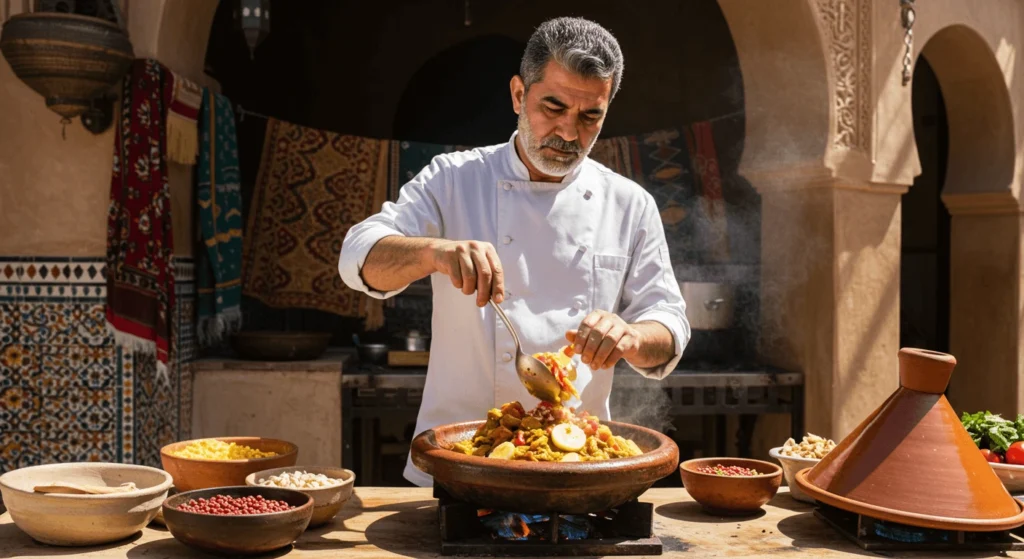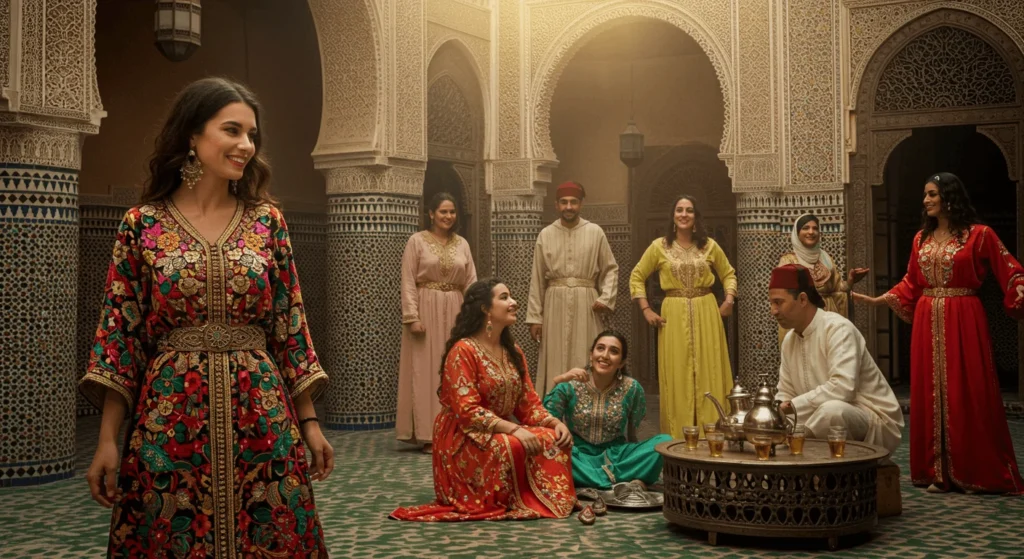Introduction
The best time to visit Morocco can greatly impact your experience in this enchanting and diverse destination. Morocco is known for vibrant cities, stunning landscapes, and rich cultural heritage. It offers something unique for every traveler. Choosing the right season ensures you enjoy highlights like the Sahara Desert, Atlas Mountains, and Atlantic beaches.
Timing matters when experiencing Morocco’s famous festivals, like the Rose Festival or Marrakech International Film Festival. Each season brings unique opportunities. Spring offers mild weather and blooming flowers, while winter provides cozy riads and snowy peaks. Your plans may also align with activities like surfing in Taghazout during autumn or attending summer festivals in Essaouira.
This guide explores the best time to visit Morocco based on weather, festivals, and activities. By the end, you’ll have all the details to plan an unforgettable trip tailored to your interests.
Here’s the revised Understanding Morocco’s Climate and Seasons section with increased transition words to ensure over 30% of sentences include them:
Understanding Morocco’s Climate and Seasons
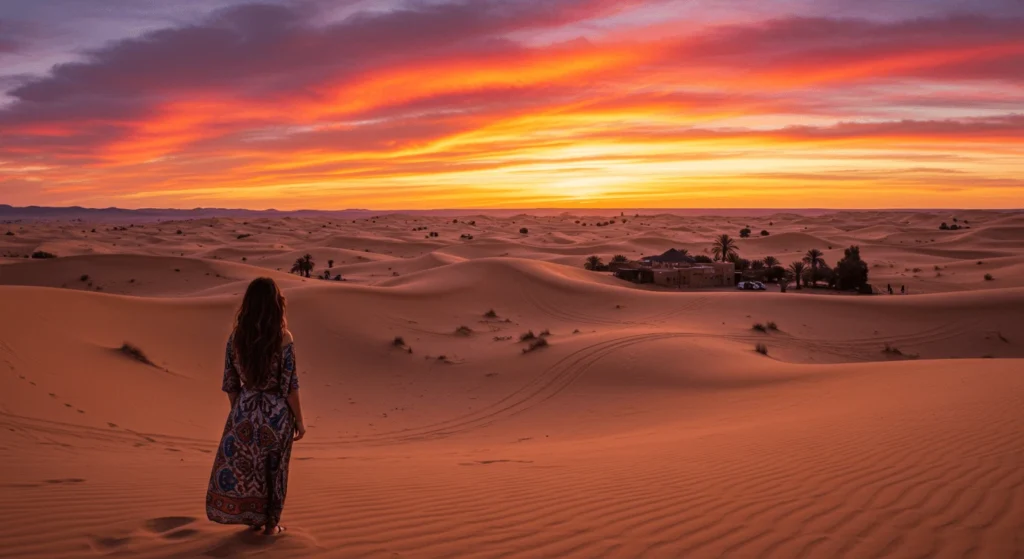
Morocco’s diverse geography creates varied climates, making it crucial to determine the best time to visit Morocco for your destination. Whether you prefer coastal cities, desert landscapes, or mountainous regions, understanding the climate ensures a smoother trip.
Best Time to Visit Morocco’s Coastal Regions
Morocco’s coastal areas feature a Mediterranean climate, which means mild winters and warm summers. Cities like Rabat, Tangier, and Essaouira remain inviting all year.
• Mediterranean Climate Overview
Along the coast, winters are mild, with average temperatures between 12°C and 18°C (54°F to 64°F). Summers, however, are warm but comfortable, with temperatures ranging from 22°C to 28°C (72°F to 82°F). Moreover, cool Atlantic breezes help regulate the heat during summer.
• Best Times to Visit Coastal Cities
Spring (March-May) and autumn (September-November) are particularly ideal for exploring Morocco’s coastal cities. For instance, Rabat offers historical landmarks like the Kasbah of the Udayas, while Tangier’s medina combines culture and history. Additionally, Essaouira’s temperate weather makes it a year-round favorite for cultural enthusiasts and beachgoers alike.
• Activities in Coastal Regions
Coastal regions are perfect for relaxing on sandy beaches or exploring local culture. For example, Essaouira is renowned for windsurfing, while Rabat is ideal for strolling through its vibrant markets. Furthermore, the milder weather during spring and autumn enhances outdoor exploration.
Best Time to Explore Morocco’s Desert Climate
The interior of Morocco, including the Sahara Desert, has an arid climate with extreme temperature variations. Planning your trip around these conditions ensures a more enjoyable experience.
• Seasonal Temperature Variations
Summer in the Sahara (June-August) can be intensely hot, with daytime highs often exceeding 45°C (113°F). However, nights are relatively cooler. In contrast, winter (December-February) provides more comfortable daytime temperatures averaging around 20°C (68°F), though nights can drop below 5°C (41°F).
• Best Times to Visit the Desert
The best time to visit Morocco’s desert is during late autumn (October-November) or early spring (March-April). These seasons offer moderate temperatures, making camel trekking and exploring dunes far more enjoyable. Additionally, clear skies during these months create perfect conditions for stargazing.
• Desert Activities and Destinations
Iconic desert locations like Merzouga and Erg Chebbi dunes are popular choices for travelers. Activities such as sandboarding, camel rides, and luxury desert camping are highlights. Furthermore, mornings and evenings are the best times for outdoor activities, as midday heat can be intense.
When to Visit Morocco’s Atlas Mountains
The Atlas Mountains, with their alpine climate, offer a variety of experiences depending on the season. Whether you want to trek or ski, the timing of your visit is essential.
• Seasonal Highlights
Spring (March-May) transforms the mountains into lush, green landscapes, with temperatures ranging from 15°C to 20°C (59°F to 68°F). Winter (December-February), on the other hand, brings snow and cooler temperatures, averaging 0°C to 5°C (32°F to 41°F).
• Best Times for Activities in the Atlas Mountains
Spring and early summer are perfect for trekking, especially in the High Atlas, where blooming wildflowers line the trails. For winter sports enthusiasts, the Atlas Mountains offer skiing opportunities in resorts such as Oukaïmeden, just 75 kilometers (47 miles) from Marrakech. Additionally, winter provides a serene escape with breathtaking snowy views.
• Exploring Berber Culture
Visiting traditional Berber villages during spring or autumn allows you to experience their rich culture. Moreover, these seasons offer ideal weather for exploring local markets and enjoying authentic hospitality.
Conclusion
Understanding Morocco’s diverse climates ensures you choose the best time to visit Morocco for your travel goals. Coastal cities, desert adventures, and mountain escapes each offer unique experiences throughout the year, ensuring there’s always a reason to visit.
Best Time to Visit Morocco for Weather

Morocco’s weather varies widely across its regions, offering unique opportunities to enjoy the country’s diverse landscapes. Understanding the seasonal patterns helps you determine the best time to visit Morocco for weather that suits your activities and preferences.
Ideal Months for the Best Weather in Morocco
The ideal months for the best weather in Morocco are March to May and September to November. During these seasons, temperatures are mild, making it perfect for outdoor activities.
• Spring (March-May):
Spring is one of the best times to visit Morocco, with temperatures ranging between 15°C and 25°C (59°F to 77°F). This season is ideal for exploring cities like Marrakech, where the souks and gardens are vibrant. Additionally, hiking the Atlas Mountains during spring offers lush greenery and blooming wildflowers. The pleasant weather allows travelers to visit multiple destinations comfortably.
• Autumn (September-November):
Autumn provides similarly favorable conditions, with temperatures averaging 20°C to 30°C (68°F to 86°F). The season is perfect for cultural experiences, such as exploring Fez’s medina or visiting Aït Benhaddou. Furthermore, autumn offers fewer crowds compared to peak summer, ensuring a more relaxed travel experience.
These shoulder seasons balance comfortable weather with an opportunity to explore Morocco’s cities, mountains, and coasts without the peak tourist rush.
Visiting Morocco During the Summer Months
Summer in Morocco, particularly June to August, can be challenging due to the extreme heat in certain regions. However, with careful planning, it can still be a rewarding experience.
• Pros: Coastal Breeze in Essaouira and Agadir
The coastal cities of Essaouira and Agadir remain cool during summer, thanks to the Atlantic breeze. Temperatures in these regions hover between 22°C and 28°C (72°F to 82°F), making them ideal for beachgoers. Essaouira, known as the “Wind City,” is perfect for windsurfing and kiteboarding, attracting enthusiasts worldwide. Agadir’s sandy beaches and vibrant promenades offer relaxation and entertainment.
• Cons: Extreme Heat in Desert Regions
Inland areas, such as Marrakech and the Sahara Desert, experience intense heat during summer. Daytime temperatures often exceed 40°C (104°F), making outdoor exploration uncomfortable. Travelers visiting these regions should plan activities early in the morning or late in the evening. Staying hydrated and seeking shade during peak heat are essential.
While summer is not the best time to visit Morocco for all regions, it’s perfect for coastal adventures or cultural festivals like the Gnaoua World Music Festival in Essaouira.
Winter in Morocco: A Unique Experience
Winter, from December to February, offers a unique blend of mild coastal climates and snowy mountain adventures, making it one of the best times to visit Morocco for diverse experiences.
• Explore Snow-Covered Atlas Mountains
Winter transforms the Atlas Mountains into a snowy paradise, ideal for skiing and snowboarding. Resorts like Oukaïmeden and Michlifen offer excellent facilities for winter sports enthusiasts. Temperatures in these regions range from 0°C to 5°C (32°F to 41°F), creating the perfect conditions for snow activities. Additionally, winter treks offer breathtaking views of snow-capped peaks and serene landscapes.
• Enjoy Mild Winters in Marrakech and Casablanca
Coastal and central cities experience mild winters, with daytime temperatures averaging between 10°C and 17°C (50°F to 63°F). Marrakech’s medina remains lively, and its gardens, such as Jardin Majorelle, offer tranquil escapes. Casablanca’s coastal location ensures pleasant weather, perfect for exploring attractions like Hassan II Mosque or enjoying seaside dining.
Winter also allows travelers to experience Morocco’s traditional hammams and cozy riads, which provide warmth and relaxation after a day of exploration.
Conclusion
Morocco’s weather offers something for every traveler, making it a year-round destination. By aligning your visit with the seasons, you can ensure the best time to visit Morocco for your preferred activities and experiences.
Best Time to Visit Morocco for Festivals and Events
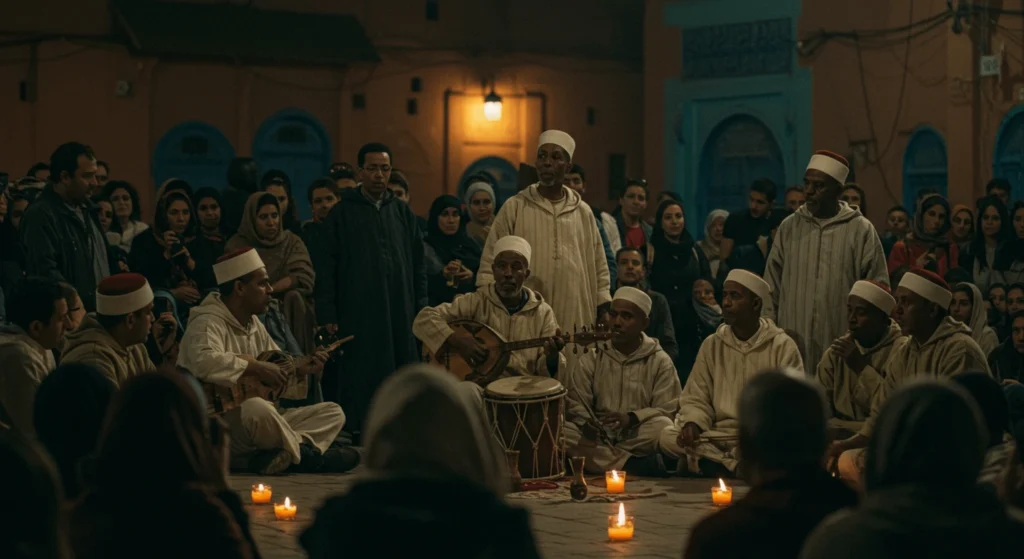
Morocco’s vibrant festivals showcase its rich culture, music, and traditions, making it a unique travel destination. Timing your visit to coincide with these events allows you to experience the country’s colorful celebrations.
Spring Festivals in Morocco You Can’t Miss
Spring, from March to May, is one of the best times to visit Morocco, thanks to its lively festivals and mild weather.
• Rose Festival in Kelaat M’Gouna
Every May, the Dades Valley hosts the Rose Festival to celebrate the annual harvest of fragrant roses. The small town of Kelaat M’Gouna comes alive with music, parades, and dance performances. Visitors can explore local markets filled with rose-based products, including perfumes, soaps, and oils. This festival also highlights traditional Berber music and culture, making it a must-visit for anyone seeking an authentic experience.
• Marrakech Popular Arts Festival
This internationally acclaimed festival takes place in Marrakech during spring, featuring traditional Moroccan music, dance, and theatrical performances. El Badi Palace serves as the main stage, providing a stunning historical backdrop. Additionally, street performers and artists fill the city’s medina, offering a festive atmosphere. It’s the perfect event for immersing yourself in Morocco’s artistic heritage while enjoying the pleasant spring temperatures.
Summer Events: The Best Time to Experience Morocco’s Music Festivals
Summer, particularly June to August, is ideal for music lovers, as Morocco hosts world-renowned music festivals during this time.
• Mawazine World Music Festival
Held in Rabat every June, Mawazine is one of the largest music festivals in Africa. It attracts international superstars alongside local talent, offering a diverse mix of genres, from pop and jazz to traditional Moroccan music. Past performers have included Rihanna, Mariah Carey, and Stromae. The festival’s multiple stages across Rabat’s cityscape create a lively atmosphere, making it a highlight of Morocco’s summer events.
• Gnaoua World Music Festival in Essaouira
This festival celebrates Gnaoua music, a spiritual blend of African, Berber, and Arabic influences. Held in the coastal city of Essaouira, it attracts both traditional and modern artists. Performances take place on open-air stages set against Essaouira’s picturesque medina and beaches. Visitors can enjoy not only the music but also the city’s vibrant art galleries, windsurfing opportunities, and fresh seafood.
Autumn and Winter: Morocco’s Cultural Celebrations
Autumn and winter, from September to February, offer opportunities to experience Morocco’s cultural richness through unique festivals and events.
• Erfoud Date Festival
Every October, the desert town of Erfoud hosts a festival to celebrate the date harvest. The event features camel races, traditional dances, and markets selling local date varieties. Additionally, visitors can explore nearby oases and the Sahara Desert for a truly immersive experience. The festival is an excellent opportunity to connect with local Berber traditions and savor Morocco’s sweetest fruit.
• International Film Festival in Marrakech
Held in December, this prestigious event attracts filmmakers, actors, and movie enthusiasts from around the world. The festival showcases films in iconic locations like Jemaa el-Fnaa and luxury hotels. Workshops and panel discussions provide insights into the global film industry. Furthermore, winter’s mild weather makes it a great time to explore Marrakech’s cultural landmarks, such as the Bahia Palace or the Majorelle Garden, after attending screenings.
Conclusion
Morocco’s festivals and events bring its culture and traditions to life, offering unforgettable experiences throughout the year. Whether you’re exploring spring’s vibrant celebrations, summer’s lively music festivals, or autumn and winter’s cultural events, the best time to visit Morocco for festivals depends on your interests and travel plans.
Best Time to Visit Morocco for Specific Activities

Morocco offers a wide range of activities, each best enjoyed during specific times of the year. Knowing the right seasons ensures you make the most of your trip. Whether you’re exploring the desert, trekking mountains, or riding the waves, timing is everything.
When to Explore the Sahara Desert in Morocco
The Sahara Desert is one of Morocco’s most iconic destinations, offering unforgettable adventures among golden dunes and starry skies.
• Best Time: Late Autumn and Early Spring
Late autumn (October-November) and early spring (March-April) are the best times to visit Moroccofor a desert adventure. During these months, daytime temperatures average a comfortable 25°C to 30°C (77°F to 86°F), while nights are cooler. The mild weather allows travelers to enjoy activities such as camel trekking, quad biking, and sandboarding. Additionally, the clear skies during these seasons provide perfect conditions for stargazing at luxury desert camps in Merzouga or Erg Chebbi.
• Avoid Extreme Summer Heat
Summer (June-August) brings intense heat, with daytime temperatures exceeding 45°C (113°F) in the Sahara. Activities become challenging during this time, and visitors risk dehydration or heat exhaustion. If you must visit in summer, plan excursions early in the morning or late in the evening, when the heat is less oppressive. Furthermore, ensure you stay hydrated and wear appropriate clothing to protect against the sun.
Exploring the desert during the cooler months ensures a safer, more enjoyable experience while allowing you to fully appreciate its stunning beauty.
Best Seasons for Trekking in Morocco’s Atlas Mountains
The Atlas Mountains offer a range of trekking experiences, from lush spring trails to snowy winter peaks. Timing your visit correctly enhances your adventure.
• Spring and Early Summer for Lush Greenery
Spring (March-May) and early summer (June) are ideal for trekking in the High Atlas Mountains. During these months, temperatures range from 15°C to 20°C (59°F to 68°F), creating comfortable conditions for hiking. Trails, such as those leading to Mount Toubkal, are lined with blooming wildflowers and offer breathtaking views of valleys and villages. Furthermore, spring is the perfect time to visit Berber villages, where you can experience traditional hospitality and local cuisine.
• Winter for Skiing Opportunities
Winter (December-February) transforms the mountains into a snowy wonderland, making it one of the best times to visit Morocco for skiing and snowboarding. Resorts like Oukaïmeden and Michlifen provide excellent slopes and facilities. Oukaïmeden, located just 75 kilometers (47 miles) from Marrakech, is especially popular for its accessibility and panoramic views. Temperatures in winter average 0°C to 5°C (32°F to 41°F), ensuring ideal conditions for winter sports enthusiasts.
Trekking or skiing, the Atlas Mountains promise a rewarding experience for travelers seeking adventure and natural beauty.
Surfing in Morocco: Best Time for Coastal Adventures
Morocco’s Atlantic coastline is a haven for surfers, offering consistent waves and world-class surf spots.
• Best Time: September to April for Ideal Waves
The surf season peaks from September to April, when swells are strongest, and weather conditions are optimal. Popular destinations like Taghazout, Imsouane, and Essaouira attract surfers from around the globe. Taghazout, often called Morocco’s surf capital, offers famous breaks such as Anchor Point and Panorama Beach. Meanwhile, Imsouane is known for its long, gentle waves, perfect for beginners and longboarders.
• Other Coastal Adventures
Beyond surfing, Morocco’s coastal regions offer a range of activities. Essaouira, for example, is ideal for windsurfing and kiteboarding, while Agadir’s sandy beaches are perfect for relaxing and swimming. Additionally, the coastal towns provide a cultural experience, with vibrant medinas, fresh seafood markets, and local crafts.
Surfing in Morocco is not only about the waves—it’s also about the laid-back atmosphere and stunning coastal scenery.
Conclusion
Timing your visit ensures you experience the best time to visit Morocco for its unique activities. From the Sahara’s mesmerizing dunes to the Atlas Mountains’ trails and the Atlantic’s surf, Morocco offers adventures year-round.
Essential Tips for Planning Your Morocco Trip
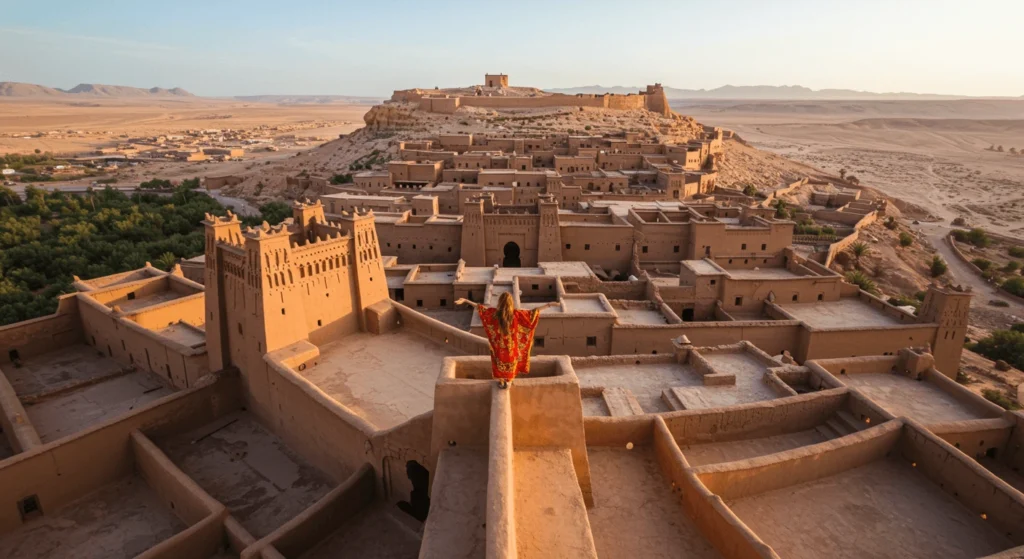
Proper planning can significantly enhance your experience in Morocco. From booking accommodations to packing for diverse climates, these tips ensure a smooth and enjoyable journey.
Best Time to Book Flights and Accommodations in Morocco
Booking your flights and accommodations early is essential, especially if you’re visiting during Morocco’s peak seasons.
• Book Early During Peak Seasons
Spring (March-May) and autumn (September-November) are the best times to visit Morocco, making these periods popular with tourists. Flights and accommodations tend to fill up quickly, so booking at least three months in advance is advisable. Use platforms like Skyscanner to compare flight prices and receive alerts on deals.
• Consider Staying in Traditional Riads
Riads, traditional Moroccan houses with interior courtyards, provide an authentic and charming accommodation experience. They are often located in medinas, giving travelers easy access to cultural and historical sites. For example, Riad Yasmine in Marrakech offers stunning interiors and a rooftop pool, making it a favorite among travelers. Additionally, riads provide personalized service, often including traditional Moroccan breakfasts. Book these accommodations early, especially during festivals or holiday seasons, as their unique appeal makes them highly sought after.
For those traveling during summer, consider coastal accommodations in Essaouira or Agadir, where the ocean breeze provides a refreshing escape from the heat.
Packing Essentials for Morocco’s Diverse Weather
Morocco’s weather varies by region and season, so packing appropriately ensures comfort throughout your journey.
• Layered Clothing for Temperature Changes
Temperatures can shift significantly between day and night, especially in desert or mountainous regions. For spring and autumn trips, bring lightweight layers like breathable tops, sweaters, and scarves. If visiting the Sahara Desert in winter, pack warm clothing for chilly nights, such as thermal layers and a jacket. A waterproof layer is essential if you’re exploring the Atlas Mountains during spring rains.
• Sun Protection and Comfortable Footwear
The Moroccan sun can be intense, particularly in summer or desert areas. Bring sunscreen with high SPF, a wide-brimmed hat, and sunglasses to protect yourself. Comfortable footwear is a must for walking through medinas, trekking in the mountains, or exploring desert dunes. Sturdy walking shoes or hiking boots are ideal for uneven terrains, while sandals work well for coastal destinations.
Additionally, a lightweight scarf or shawl is versatile for sun protection or adhering to conservative dress norms in rural areas.
Navigating Morocco: Transportation and Local Tips
Understanding transportation options and local customs can help you navigate Morocco more easily and respectfully.
• Tips for Transportation
Morocco has a well-connected transportation network, including trains, buses, and shared taxis. The ONCF train service is reliable for traveling between major cities like Casablanca, Rabat, and Marrakech. For exploring rural areas or smaller towns, consider hiring a private driver or renting a car. Apps like Careem or Bolt are convenient for getting around cities. Additionally, shared taxis (known as grand taxis) are a cost-effective way to travel short distances between towns.
• Local Customs and Etiquette
Moroccan culture emphasizes hospitality and respect. When visiting rural areas or religious sites, dress modestly by covering shoulders and knees. Learning basic Arabic or Berber phrases, such as “Shukran” (thank you), can foster positive interactions with locals. Bargaining is expected in markets, so negotiate prices politely but firmly.
• Safety Considerations and Travel Insurance
Morocco is generally safe for tourists, but pickpocketing can occur in crowded areas like medinas. Keep valuables secure and avoid displaying expensive items. Travel insurance is highly recommended to cover unexpected events such as medical emergencies or lost luggage. Providers like World Nomads offer comprehensive coverage tailored to international travelers.
Additionally, familiarize yourself with emergency contacts, including the local police (190) and medical services (150), for added peace of mind.
Conclusion
By booking early, packing smartly, and understanding local customs, you’ll be well-prepared to enjoy the best time to visit Morocco. These tips ensure a hassle-free trip filled with unforgettable experiences.
Conclusion
Choosing the best time to visit Morocco ensures you enjoy everything this enchanting destination offers. From diverse weather to vibrant festivals and exciting activities, Morocco provides unforgettable experiences year-round.
Recap: Best Time for Weather
The best time to visit Morocco for pleasant weather is during spring (March-May) and autumn (September-November). During these months, temperatures are mild, averaging 15°C to 25°C (59°F to 77°F), making outdoor activities enjoyable. Spring’s blooming flowers and lush greenery enhance trekking in the Atlas Mountains, while autumn’s golden landscapes offer stunning photography opportunities. Coastal cities like Essaouira and Agadir also experience perfect weather during these seasons, ideal for beach relaxation or exploring historical sites.
Winter (December-February) brings snow to the Atlas Mountains, creating opportunities for skiing and snowboarding. Meanwhile, cities like Marrakech and Casablanca enjoy mild temperatures, perfect for exploring medinas or sipping mint tea in sunny courtyards. Summer (June-August) is hot inland but great for coastal adventures, where ocean breezes make destinations like Essaouira comfortable.
Recap: Best Time for Festivals and Events
Morocco’s festivals and events add cultural depth to any visit. Spring is vibrant with the Rose Festival in Kelaat M’Gouna, celebrating the harvest of fragrant roses. The Marrakech Popular Arts Festivalshowcases traditional music, dance, and art, offering an immersive cultural experience.
In summer, the Mawazine World Music Festival in Rabat and the Gnaoua World Music Festival in Essaouira draw music lovers from around the world. Autumn brings the Erfoud Date Festival, a celebration of Morocco’s sweetest fruit, complete with camel races and traditional dances. Winter culminates in the prestigious Marrakech International Film Festival, a glamorous event that attracts global filmmakers and cinema enthusiasts.
Recap: Best Time for Specific Activities
The best time to visit Morocco for specific activities depends on your interests. For exploring the Sahara Desert, late autumn (October-November) and early spring (March-April) offer moderate temperatures, perfect for camel trekking, sandboarding, and stargazing in luxury desert camps.
For trekking enthusiasts, spring and early summer are ideal for exploring the Atlas Mountains, where trails are lush and vibrant. Winter transforms these mountains into a snowy playground, perfect for skiing in resorts like Oukaïmeden.
Surfers will find September to April the best time to visit Morocco for catching Atlantic waves. Popular surf spots like Taghazout, Imsouane, and Essaouira offer consistent swells, catering to both beginners and seasoned surfers.
Final Thoughts
No matter when you visit, Morocco’s diverse landscapes, rich culture, and warm hospitality ensure a memorable trip. Timing your visit around the best time to visit Morocco based on weather, festivals, or activities allows you to tailor your experience. Whether you’re trekking mountains, surfing waves, or soaking up desert sunsets, Morocco has something special to offer in every season.
